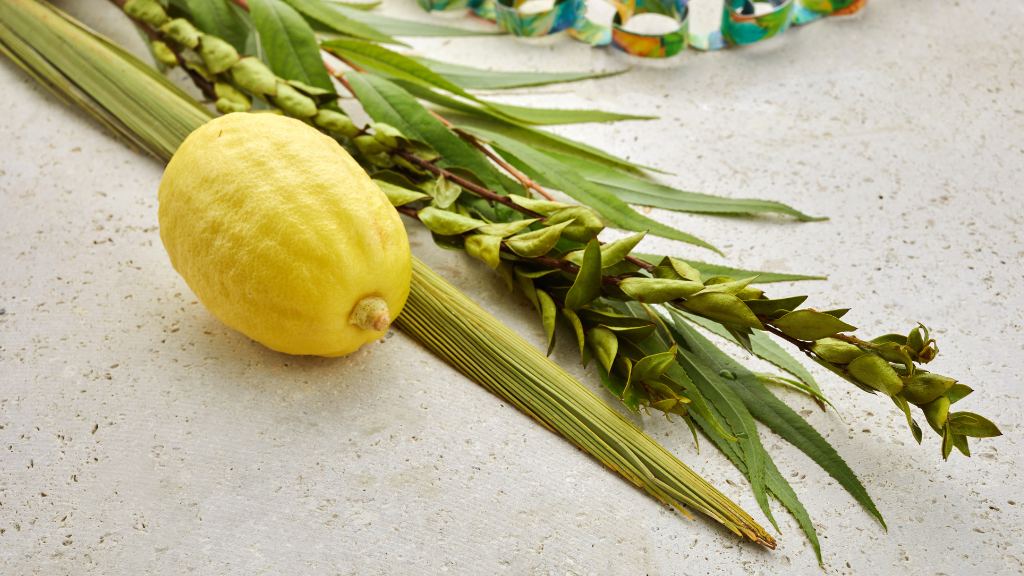Lulav – Signs of the Faith
In this series, ‘Signs of Faith’, objects, procedures and concepts that express Jewish faith are explained and discussed.
We find a remarkable precept for the Feast of Tabernacles in Leviticus 23:40: “Now on the first day you shall take for yourselves the fruit of beautiful trees, palm branches and boughs of leafy trees and willows of the brook, and you shall rejoice before the Lord your God for seven days.”
You must have seen it before, the palm branch and the citrus fruit as attributes of the Feast of Tabernacles. On the seven days of the feast, every morning during morning prayers, the bundle of branches is taken in the right hand and the lemon in the left hand and moved back and forth in six directions: east (forward), south (right), west (back), north (left), up and down, as a symbol of God’s universal rule. Moving the lulav is associated with prayers for rain, but the lulav is also taken in hand during the singing of the Hallel (Psalms 113-118 and 136). Psalm 118 contains the words “Hosha’na—O Lord, do save, we beseech You” (verse 25). On the seventh day, while those words are sung, the lulav is walked around the bima (the elevation where Torah is read) seven times. This is called Hosha’na rabba, the ‘great Hosanna’.
What fruits and branches are used? Traditionally, the etrog citron (etrog actually being the Aramaic word for beautiful, desirable) is taken for the fruit of beautiful trees. The palm branch comes from the date palm (Hebrew: Tamar). The word lulav for palm branch comes from post-Biblical times. In common parlance, it also denotes the whole bundle of branches, which further consists of a branch of myrtle (the ‘leafy tree’) and a willow branch.
These so-called ‘four species’ take on all kinds of symbolic meanings. One of the oldest homiletic explanations in the Jewish tradition is that the etrogstands for a man’s heart, the myrtle for his eye, the willow for his mouth and the lulav for his spine (showing backbone).
Why these four? According to Maimonides, they were the most readily available products in the land of Israel, recalling the fertility of the land. They symbolise nature, rain, the cycle of the seasons, and things shared by all humanity. And thus, writes Rabbi Jonathan Sacks, they represent the universal meaning of the feast.






